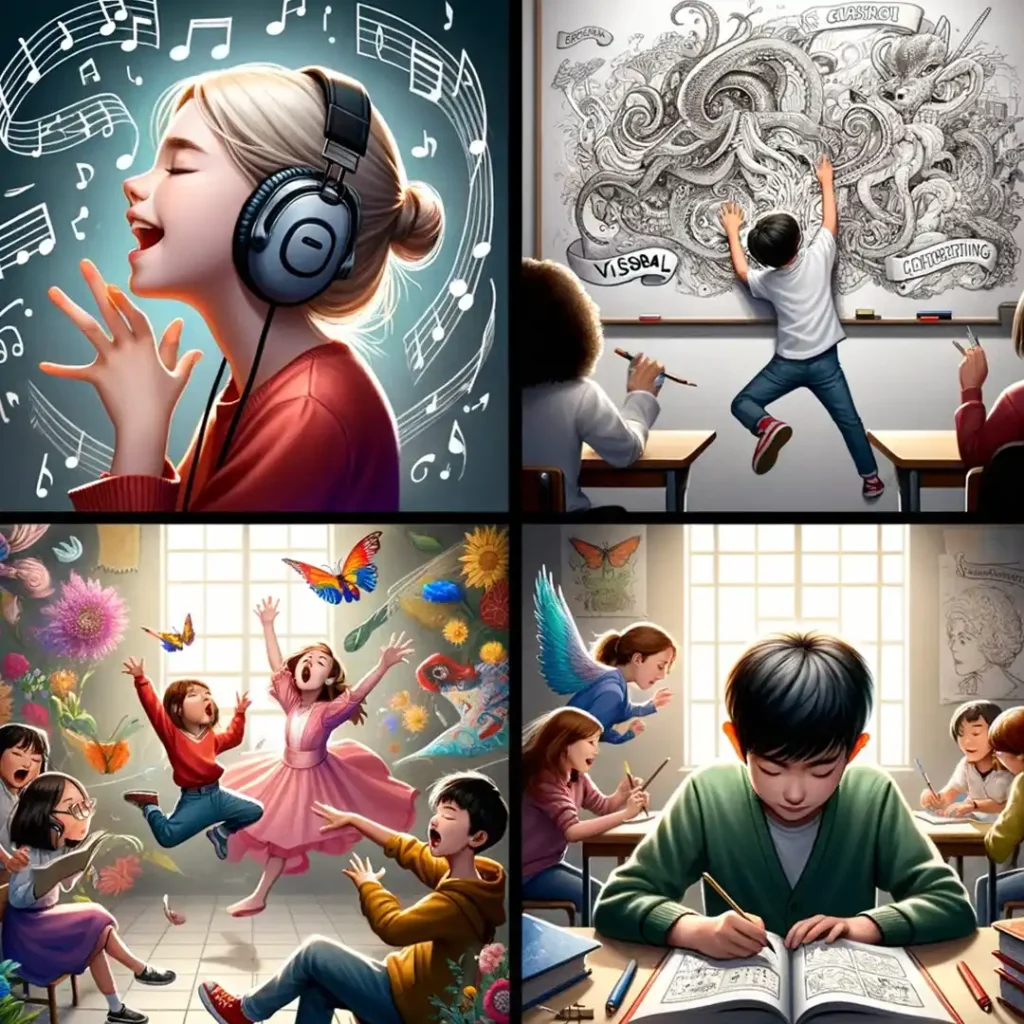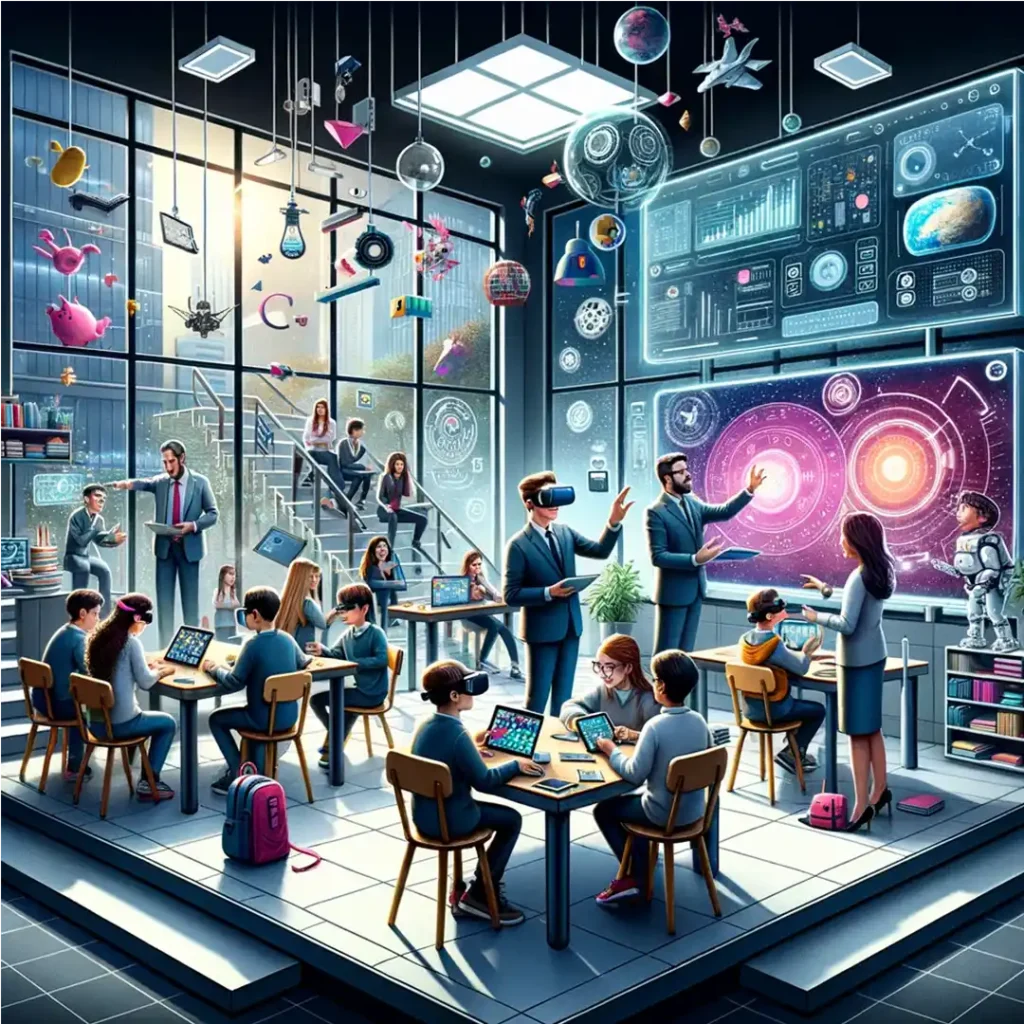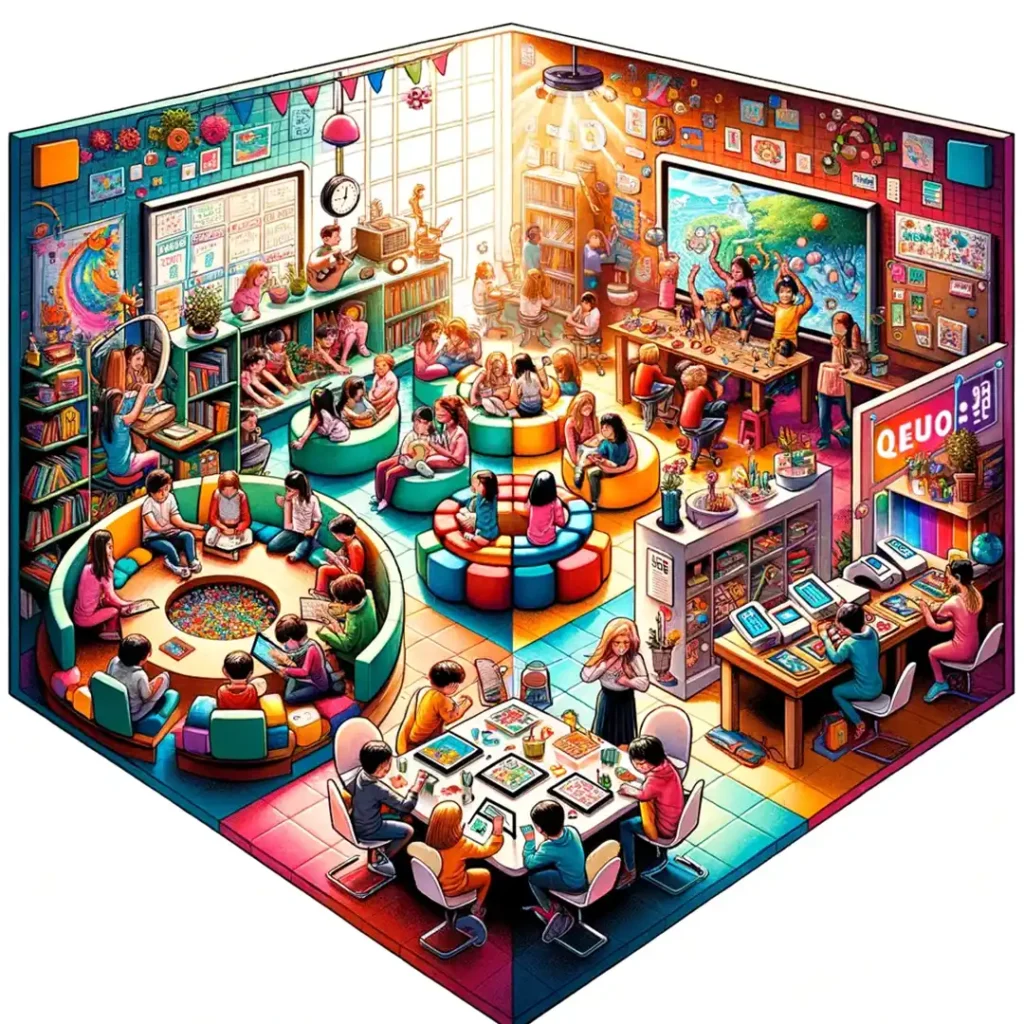From the moment a teacher steps into a classroom, they are greeted with a myriad of personalities, each emanating a unique vibrancy and potential. Every student presents a distinct set of learning preferences, challenging the educator to not just teach, but to truly connect. For educators, the primary objective becomes creating an environment that caters to these diverse learning pathways.
Importance of Understanding Individual Learning Styles
In the early phases of education, there was a predominant belief in a one-size-fits-all approach, rooted in standardized curriculums and methodologies. However, as pedagogical research advanced, it became evident that such an approach could not cater to the diverse cognitive tools and preferences inherent in every student. Some learners resonate more with visual cues, processing information best through charts or images. Others thrive in auditory environments, absorbing knowledge from lectures and discussions. Then there are kinesthetic learners, tactile learners, and so forth.
Recognizing these diverse styles isn’t about compartmentalizing students into categories. Instead, it’s a nod to the vast spectrum of cognitive diversity present in a single classroom. When educators understand and acknowledge these learning styles, they can adapt their teaching methods, ensuring a more inclusive and effective educational environmen
The Role of Personalized Education in Boosting Academic Success

Pedagogical research consistently underscores the immense benefits of personalized education. When teaching methodologies are attuned to a student’s learning style, it does more than facilitate information retention; it communicates to the student that their unique approach to learning is both recognized and valued. This acknowledgment can be instrumental in boosting a student’s academic confidence and performance.
Moreover, an education tailored to individual learning preferences instills a deeper love for learning. Students, when engaged in a manner that aligns with their innate learning style, exhibit heightened curiosity, actively participate in discussions, and delve deeper into subjects. This intrinsic motivation, kindled by personalized education, can be the cornerstone of academic excellence.
Learning Surveys
What are Learning Surveys?
Learning surveys are structured tools designed to gauge individual student preferences, strengths, and areas of improvement in their learning journey. These surveys often comprise a series of questions or statements, prompting students to reflect on their experiences, habits, and inclinations in an academic setting.
Benefits of Utilizing Learning Surveys in the Classroom
Incorporating learning surveys offers educators a deeper insight into their students’ cognitive worlds. By tapping into students’ self-assessments and perceptions, teachers can make more informed decisions about lesson planning, group dynamics, and instructional methodologies. Furthermore, when students partake in these surveys, it fosters a sense of involvement and ownership in their educational journey, increasing engagement and motivation.
Tips and Tools to Create Effective Learning Surveys
Simplicity is Key: Ensure the survey is concise and straightforward, preventing any potential overwhelm or confusion.
Diverse Question Types: Incorporate a mix of open-ended questions, Likert scale questions, and multiple-choice queries to gather a broad spectrum of information.
Utilize Technology: Platforms like Google Forms or SurveyMonkey can help in creating and distributing surveys efficiently, while also assisting in data collation.
Relevancy: Ensure questions are relevant to the academic setting and age-appropriate.
Regular Updates: Periodically update survey questions to stay aligned with evolving curriculum and classroom dynamics.
Sample Learning Survey: Evaluating Learning Styles
Instructions: Please take a moment to answer the following questions. Your honest responses will help us better understand your learning preferences and enhance your educational experience.
When trying to understand a new topic, I prefer to:
a) Read about it
b) Listen to someone explain it
c) Watch a video or look at pictures/charts
d) Try it out or practice it myself
I remember things best when I:
a) Write them down
b) Discuss them with others
c) Use them in a practical situation
d) Visualize them in my mind
When working on a project, I:
a) Plan out every detail before starting
b) Dive in and figure things out as I go
c) Discuss ideas with classmates first
d) Look for examples and models to guide me
I find it easiest to concentrate when:
a) It’s quiet and I’m alone
b) There’s background music or noise
c) I’m in a group setting
d) I can take regular breaks to move around
When faced with a challenging problem, I prefer to:
a) Read instructions or a guidebook
b) Ask someone for guidance
c) Watch a demonstration
d) Experiment with different solutions myself
I express myself best through:
a) Writing or drawing
b) Speaking or discussing
c) Demonstrating or acting
d) Building or creating physical models
Which of these relaxes you the most?
a) Reading a book
b) Listening to music or a podcast
c) Watching a movie or show
d) Doing a hands-on activity or craft
How do you typically study for a test?
a) Read and review notes
b) Discuss topics with peers
c) Use flashcards or visual aids
d) Practice or role-play scenarios
Which activity appeals to you the most?
a) Writing a story or essay
b) Giving a presentation or speech
c) Creating a poster or visual project
d) Building a model or experiment
When trying to remember something important, I:
a) Write it in a planner or notebook
b) Discuss it with someone
c) Create a mnemonic or visual cue
d) Practice or rehearse it
Journal Entries as a Reflective Practice

The Power of Self-reflection in Understanding Personal Learning Styles
The act of journaling enables students to delve deep into their cognitive processes. By articulating their experiences, challenges, and moments of epiphany in writing, students embark on a self-reflective journey, helping them identify and articulate their personal learning styles.
How to Guide Students in Journaling About Their Learning Experiences
Setting Clear Objectives: Before initiating the journaling process, outline its purpose to students, emphasizing its role in enhancing their learning experience.
Consistency: Encourage daily or weekly entries to keep reflections fresh and relevant.
Prompts and Questions: Offer prompts or questions to guide their writing, especially if students are unsure of where to start.
Safe Space: Ensure students that their journals are private (unless they choose to share), fostering a genuine and unfiltered reflection process.
Analyzing Journal Entries to Recognize Patterns and Preferences
Once students are comfortable with journaling, educators can offer to review these reflections (with student consent) to identify recurring themes, challenges, or areas of interest. Recognizing these patterns provides invaluable insights into each student’s unique learning trajectory, enabling educators to further personalize their teaching approach.
10 Writing Prompts for Evaluating Learning Styles
- Describe a time when you grasped a complex topic easily. What methods or tools helped you understand it?
- Think of a hobby or skill you enjoy. How did you go about learning it?
- Write about a time you struggled with a concept in school. How did you eventually overcome this challenge?
- Imagine you’re teaching someone a new skill. How would you approach it?
- Recall a memorable lesson from school. What made it memorable for you?
- If you had to explain a challenging topic to a friend, how would you do it?
- Think of a project or assignment you’re proud of. Describe your process in creating or completing it.
- How do you feel when you’re in a group learning situation versus when you’re learning on your own?
- Describe your ideal study environment. What tools, sounds, or settings help you focus best?
- Reflect on a time when a teacher’s approach really resonated with you. What did they do that made learning easier or more enjoyable?
Observational Techniques
Classroom Dynamics and Recognizing Different Learning Behaviors
One of the most insightful tools at an educator’s disposal is simple observation. By attentively monitoring classroom dynamics, educators can discern a wealth of information regarding students’ learning behaviors. For instance, some students might gravitate towards visual aids during a lesson, while others seem more engaged during oral discussions. Observing how students approach tasks—whether they jump straight in, ask questions first, or deliberate and plan—can also offer clues about their inherent learning styles.
Interactive Activities to Assess Group and Individual Learning Styles
Incorporating varied interactive activities can serve dual purposes: enhancing the learning experience and providing educators with a platform to assess diverse learning styles. Group activities, for instance, can shed light on which students naturally assume leadership roles, which prefer supporting roles, and which are most comfortable as observers or note-takers. Activities that blend visual, auditory, and kinesthetic elements can help in identifying which mode engages each student the most. Puzzles, role-playing, debates, and hands-on experiments are just a few interactive methods that, when observed closely, reveal students’ preferred learning pathways.
Feedback Sessions
Importance of One-on-One Teacher-Student Conversations
While group activities and general classroom observations provide valuable insights, there’s immeasurable worth in direct, one-on-one conversations between teacher and student. These individualized feedback sessions serve as safe spaces where students can voice concerns, ask questions, and discuss their experiences without the fear of peer judgment. For educators, these conversations provide a direct window into a student’s perceptions, struggles, and successes, making them essential for understanding individual learning journeys.
Questions to Ask Students to Uncover Their Learning Preferences
To maximize the effectiveness of these feedback sessions, it’s crucial to pose the right questions. Here are some that educators might consider:
- How do you prefer to study or prepare for assessments?
- Which class activities or methods make you feel most engaged or interested?
- Are there particular subjects or topics where you feel you need a different approach to understand better?
- How do you feel about group tasks compared to individual tasks?
- When you encounter a challenging concept, what’s your go-to method to understand it?
- Is there a type of assignment or project you particularly enjoyed? Why?
- Do you find visual aids (like charts, diagrams, and videos) helpful?
- How do you feel after participating in class discussions or debates?
- Are there any tools or resources you wish were more available in our lessons?
- How can I, as your teacher, support you better in your learning journey?
Utilizing Technology
As education evolves, so does the arsenal of tools available to educators. Modern technology offers an array of innovative ways to gauge and understand the diverse learning styles of students. By harnessing the power of technology, educators can create more tailored and effective learning experiences.
Online Tools and Apps to Help Evaluate Student Learning Styles
In the digital age, various online platforms and applications have been developed specifically to aid teachers in discerning the preferred learning modes of their students. Here are a few noteworthy tools:
VARK Questionnaire: Originally a paper-based survey, the VARK online tool determines whether a student prefers visual, auditory, reading/writing, or kinesthetic learning.
Kahoot!: While often seen as a fun quiz game, Kahoot! can be leveraged to understand how students prefer to engage with content, especially when analyzing response times and accuracy.
Padlet: An online bulletin board, Padlet can help teachers observe how students interact with and organize information, giving clues about their learning preferences.
Integrating Technology with Traditional Evaluation Methods
While technology offers enhanced and innovative ways to evaluate student learning styles, it’s most potent when integrated with traditional evaluation methods. Here’s how educators can create a harmonious blend:
Hybrid Assessments: Combine online quizzes with in-person discussions. For instance, after a Kahoot! session, hold a class discussion to delve deeper into the topic and observe students’ verbal engagement and comprehension.
Digital Journals: Encourage students to maintain online journals or blogs. This merges the reflective practice of journaling with digital literacy, allowing students to express their learning journey through multimedia – text, images, videos, and even audio clips.
Feedback Platforms: Use tools like Google Forms or SurveyMonkey post-lessons or assignments. These digital platforms can capture student feedback, which can then be supplemented with one-on-one feedback sessions.
Interactive Presentations: Tools like Prezi or SlideShare can be used alongside traditional presentation methods. Observing how students interact with these platforms—whether they lean towards visuals, bullet points, or animations—can offer insights into their learning preferences.
Digital Group Work: Platforms like Google Docs or Trello can be used for group projects. Observing how students collaborate, delegate, and interact online can supplement observations made during in-person group activities.
Tailoring Classroom Activities

Understanding students’ learning preferences is only half the battle. The true magic happens when educators use this knowledge to tailor classroom activities, ensuring that every student’s learning potential is maximized. The ultimate goal is to craft personalized experiences that resonate with each individual, making learning not only effective but also engaging.
Using Evaluation Results to Craft Personalized Learning Experiences
Analyze and Interpret: Begin by thoroughly reviewing the data and feedback obtained from evaluations, be it from surveys, journal entries, technology tools, or observations. Look for patterns, strong preferences, and specific needs.
Grouping by Preference: Classify students based on their dominant learning styles. While it’s essential to recognize that many students might have a blend of preferences, this classification can serve as a starting point.
Adaptable Content: Design lesson plans that can be tweaked easily. For instance, a history lesson could be taught through a combination of videos (for visual learners), podcasts (for auditory learners), hands-on activities (for kinesthetic learners), and reading assignments (for reading/writing learners).
Feedback Loop: After implementing tailored activities, continuously seek feedback from students to understand what’s working and what needs refinement.
Strategies to Cater to Diverse Learning Styles in a Single Classroom
Differentiated Instruction: This approach involves planning the same lesson in multiple ways to cater to different learning styles. For example, when teaching about the water cycle, one could use a diagram, a song, a physical demonstration, and a reading passage.
Rotation Stations: Create activity stations in the classroom, each catering to a specific learning style. Allow students to rotate through them, ensuring they engage with the content in diverse ways.
Choice Boards: Offer students a menu of tasks to choose from, with each task designed for a different learning style. For instance, after a literature lesson, students could choose between drawing a scene (visual), writing a reflective essay (reading/writing), enacting a skit (kinesthetic), or discussing themes in a group (auditory).
Real-World Applications: Design projects where students can choose how to approach a real-world problem, catering to their strengths and preferences. For example, for a project on environmental conservation, some might choose to create a documentary, others might write essays, while some might organize awareness drives.
Flexible Classroom Setup: Have areas in the classroom dedicated to different types of activities – a quiet corner for reading, a group discussion area, a hands-on activity zone, and so on.
Tech Integration: Use technology to provide resources in various formats – videos, interactive simulations, podcasts, and eBooks. This way, students can engage with content in their preferred mode.
Peer Teaching: Encourage students to teach or explain concepts to their peers. This not only solidifies their understanding but also allows them to present information in a way that aligns with their learning style, benefiting both the “teacher” and the “learner.”
In essence, tailoring classroom activities isn’t about reinventing the wheel but about ensuring that the wheel turns efficiently for everyone. By creating an environment that celebrates and caters to diversity, educators foster not just academic growth but also a genuine love for learning.
Challenges and Overcoming Them
Every endeavor, no matter how noble or necessary, comes with its set of challenges. In the realm of education, evaluating learning styles and tailoring instruction accordingly is no exception. By recognizing these challenges head-on, educators can devise strategies to overcome them.
Common Pitfalls in Evaluating Learning Styles
Over-simplification: There’s a risk of pigeonholing students into a single learning style, ignoring the fluidity and overlap of preferences. A student might predominantly be a visual learner but still benefit significantly from kinesthetic activities.
Reliance on Self-reporting: Solely depending on students’ self-assessments can sometimes lead to skewed results. Students, especially younger ones, might not yet possess full self-awareness of their learning preferences.
Neglecting Evolution: As students mature and are exposed to various learning experiences, their preferences might evolve. Assuming static learning styles can impede growth.
Addressing and Respecting Diverse Learning Needs Without Bias
Continuous Assessment: Instead of a one-time evaluation, make learning style assessments a regular feature, allowing for adjustments as students grow.
Multimodal Instruction: Instead of crafting lessons solely based on learning styles, ensure every lesson has elements catering to all styles, guaranteeing holistic exposure.
Cultural Sensitivity: Understand that learning preferences can sometimes be influenced by cultural backgrounds. Ensure that assessments and subsequent instructions are culturally inclusive.
Avoid Labeling: Refrain from labeling or categorizing students strictly based on their learning style. Use the information as a guideline rather than a definitive label.
Professional Development: Engage in workshops and seminars that address biases, promote inclusivity, and highlight best practices in differentiated instruction.
Conclusion
The quest to understand each student’s unique learning pathway is a continuous journey, laden with discoveries, challenges, and moments of enlightenment. It requires patience, adaptability, and a genuine commitment to see education not as a one-size-fits-all model but as a mosaic of diverse learners.
Embracing change is crucial. The educational landscape, influenced by societal shifts, technological advancements, and academic research, is ever-evolving. As educators, staying rooted in traditional methods might seem safe, but adaptability ensures that teaching remains relevant, effective, and resonant.
Understanding students’ learning styles and tailoring instruction accordingly isn’t just about improving academic outcomes. It’s about acknowledging and celebrating the individuality of each student. It’s about creating an environment where every student feels seen, understood, and valued. In this journey, the destination is undoubtedly important, but the learnings and transformations along the way make it truly worthwhile.

